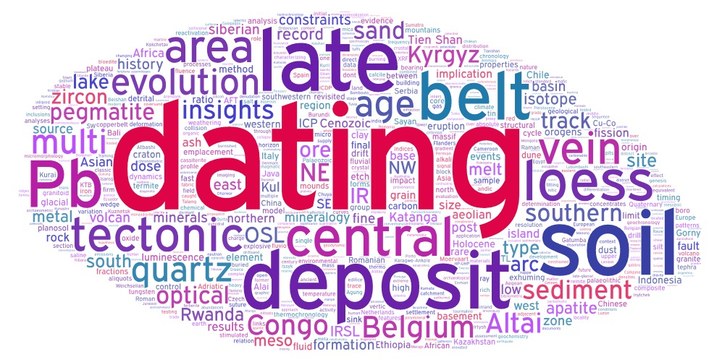Research Unit Mineralogy and Petrology
MINerals and rocks (PETrology) constitute the most important components of the Earth's crust. In "MINPET" the emphasis lies on the research of minerals and rocks with the aim to elucidate their mineralogical, structural, chemical and isotopic composition in order to gain insights into the geodynamic and tectonic evolution of a study area. In our branch on Natural Resources and their Sustainable Development, the main focus is put on the study of the mineralogy and geochemistry of mineral deposits and geomaterials, aiming at reconstructing their formation and geological evolution. In this context, amongst other study areas, the bulk of the work is focused on Central Africa.
In the Geochronology group, minerals and rocks are used as time capsules. They are dated using radiometric (isotopic) techniques to place a multitude of geological processes in an absolute time frame. The main research topic is Thermochronology, using low-temperature thermochronometric methods. These methods enable us to reconstruct the evolution of rocks through the Earth's crust. For example, thermal history reconstructions of mountain building in Central Asia, the opening of the South Atlantic, and mapping the tectonic assemblages within the crust of Thailand, India, Brazil, China, Colombia and DR Congo are currently active research projects.
Another method in geochronology applied in our research is Luminescence dating. This technique yields age information on the recent time periods in Earth's history (Quaternary). This research is mainly applied on loose sediments from a wide range of depositional environments and localities in Flanders and abroad (Siberia, Jordan, Egypt, Kazakhstan, UK, USA), and provides more insights into climatological and environmental evolution, landscape development, neo-tectonics, and geo-archaeology. Recently, research has also been initiated in methods-development for luminescence dating on consolidated rocks.
![Slijpplaatjes minpet [A] Foto 2: Toermalinisatie en muscovitisatie geassocieerd met een adertype Sn-mineralisatie uit Rutongo (Rwanda) (doorvallend lichtmicroscopie met gekruiste polarisatoren). [B] Cu-Co mineralisatie uit Kamoto (DRCongo) met chalcopyriet, chalcociet en borniet (opvallend lichtmicroscopie)](https://www.ugent.be/we/img/we13/slijpplaatjes-mineralogie/@@images/6fee5bd2-b91f-44e9-b0f0-bc8f3fbef034.jpeg)
Prof. dr. Johan De Grave or Prof. dr. Stijn Dewaele
Ghent University - Department of Geology
Campus Sterre, S8
Krijgslaan 297
B-9000 Gent
https://www.geologie.ugent.be/minpet
